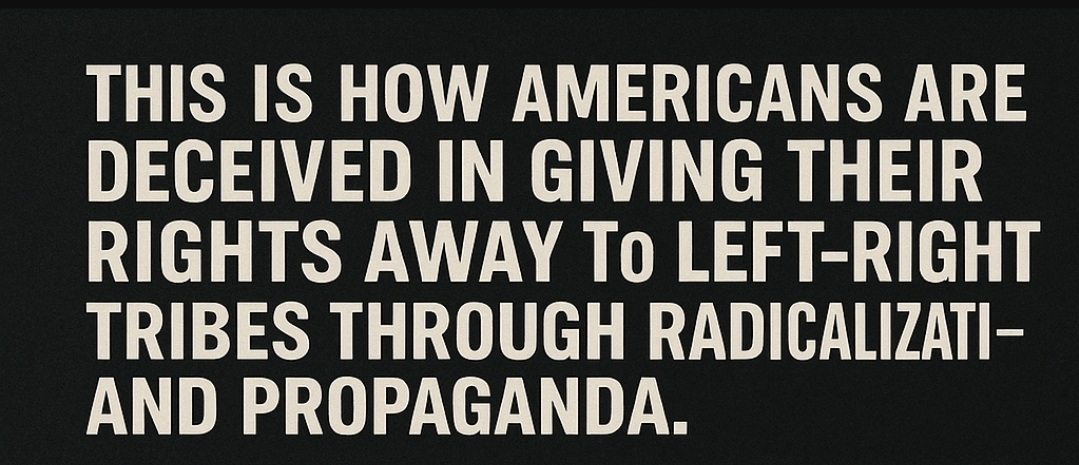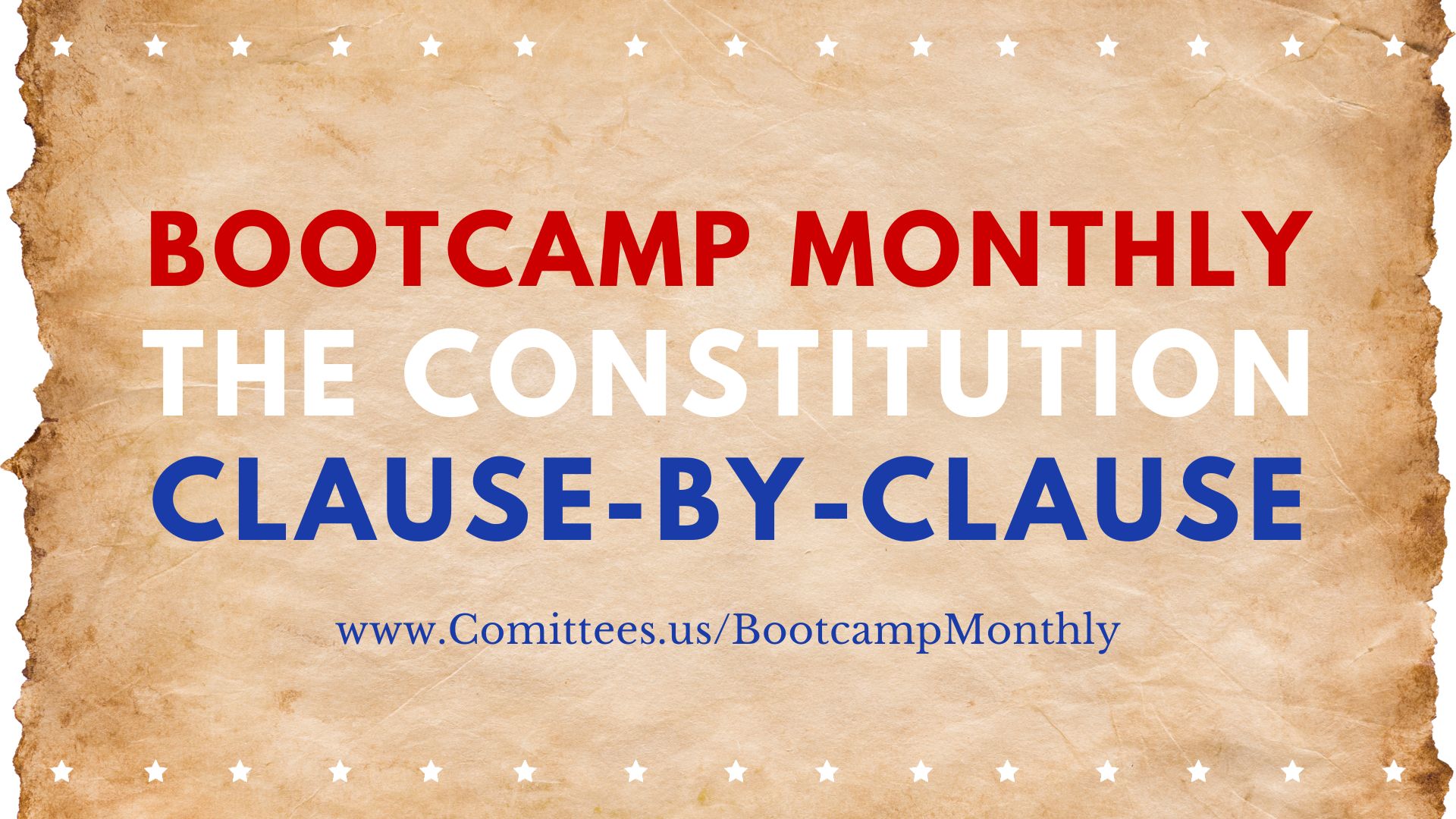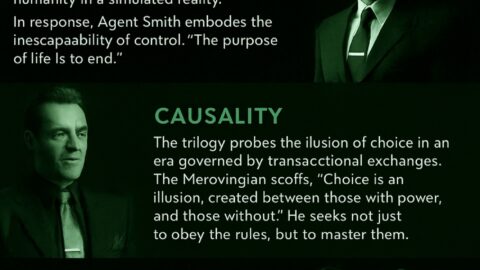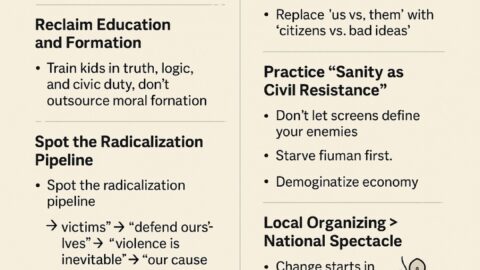“The freedoms you surrender today are the freedoms your grandchildren will never know existed.”
Kim Iverson’s warning lands because it exposes a familiar trick: the left–right paradigm is often less a clash of opposites than a relay race. One side builds a tool of control in the name of “safety” or “national security.” Power changes hands. The other side keeps the tool, expands it, and points it at a different enemy. Your rights don’t bounce back after the news cycle moves on; they shrink—ratchet-like—toward centralization.
Kim Iverson:
“So apparently AOC is eyeing a presidential run in 2028. I have been saying this—are you going to agree with it when it’s President AOC sending in the troops to quell unrest in Texas or Idaho?
Everybody be ready for President AOC. And be careful what tools you make here in this administration, because the next person in power could be President AOC, and she’s going to use every single one of those tools that the right creates, and she’s going to use them against the right.
I don’t like AOC. I do think that she has radical ideas that would hinder free speech.”
AOC (quoted):
“We’re going to have to figure out how we rein in our media environment so that you can’t just spew disinformation and misinformation. That would go after a lot of people—claiming them as terrorists, people who perpetuated a terrorist attack on the United States Capitol.”
Kim Iverson (continued):
“Quite frankly, I think she would do a lot of the things that we’re seeing the Trump administration do towards the left—calling it white supremacist terrorism. She’d just flip it.
We need to call it terrorism in the statute, she says. But if you listen carefully, she’d be doing the exact same things toward the right.
That’s why I keep warning over and over: every tool Trump creates—every time he says, ‘We’re going to label Antifa as a terrorist organization’ or ‘We’re going to crack down on these people’—flip it. Make it President AOC. Flip the group into the one you think she’d be going after, and then ask yourself if you’re okay with it.
Because that’s what it would be. When they make the tools, everybody gets to use them—left and right.
So when you’re sitting there cheering on all the executive orders he signs, when you’re there cheering on going after ‘terrorists’ (the people he labels as terrorists), when you’re cheering on him censoring speech—just remember, President AOC gets those tools as well.”
Below is a field guide to how that happens, why it works, and how to resist it.
The Script: Manufacture Crisis → Demand Control → Normalize the New Limit
- Emotionally charge the public.
Words like extremism, disinformation, hate, or insurrection flip the limbic switch. When fear spikes, risk tolerance for censorship and force rises. - Offer a “temporary” fix.
New surveillance, new speech rules, new emergency powers. The fix is sold as surgical and short-term. - Make it bipartisan by succession.
Once the other party takes office, they inherit the apparatus. Because the tool is convenient—and because no one wants to appear “soft”—they keep it. Now it’s “nonpartisan infrastructure.” - Move the Overton Window.
Yesterday’s exception becomes today’s baseline. The public adapts. The ratchet clicks forward.
Result: Centralization grows even when elections flip. The fight looks lively, but the direction of power is one-way.
Why We Fall for It: The Four Levers of Radicalization
- Narratives: Simplify complex realities into heroes/villains. When your team is “good” and theirs is “evil,” almost any measure feels justified.
- Incentives: Politicians earn points by “doing something.” Agencies gain budget and prestige by expanding missions.
- Fear & Comfort: Fear makes us accept controls; comfort (the promise of convenience and protection) makes us like them.
- Identity Fusion: Parties market politics as personality. If my identity = my side, then dissent feels like betrayal. That kills deliberation and invites coercion.
The Centralization Playbook (Recognize These Moves)
- Elastic Labels: Create vague categories (“hate speech,” “misinformation,” “domestic extremism”) that can stretch to cover inconvenient critics.
- Platform Deputization: Government pressures private platforms and payment processors to police speech. The Constitution limits the state; platform terms of service often don’t.
- Emergency Staircase: Crisis declarations unlock fast-track powers. The exit door seldom opens as wide as the entrance.
- Legal Precedent by Edge Case: Use the worst-case offender to set the everyday rule. Once on the books, the standard broadens.
The Cost of “Just This Once”
Rights erode asymmetrically:
- Speech: When categories of speech are criminalized or quasi-criminalized, dissent shifts from public squares to private anger—which is less persuadable and more combustible.
- Due Process: Lists, watch flags, deplatforming—often with opaque criteria—sidestep the protections that courts provide.
- Federalism: National “solutions” replace local pluralism. Uniform rules are easier to enforce, and harder to escape.
Your children inherit not just the law, but the norms—what officials believe they can do and what citizens believe they must endure.
The “AOC Test” (or the “Opposite Party Test”)
Iverson’s litmus is simple:
If you’d oppose a power in your opponent’s hands, don’t cheer it in your ally’s.
- Would you want your least-favorite politician to decide what counts as “hate,” “misinfo,” or “terror”?
- Would you accept your rival labeling your movement a public-safety threat?
If not, oppose the tool itself—not just the person holding it.

Practical Countermeasures (How to Withdraw Consent, Not Just Complain)
A. Guard the channels of truth
- Support decentralized platforms and outlets that publish source docs and dissenting analyses.
- Archive locally: important videos, transcripts, and papers. Memory is resistance.
B. Demand precision or vote no
- Call representatives and insist on narrow, bright-line definitions in any bill touching speech, surveillance, or emergency powers. Vague = abusable.
C. Rebuild local sovereignty
- Show up at city councils, school boards, and statehouses. Many national policies depend on local adoption. Nullification begins in small rooms.
D. Cross-tribal alliances
- Find left/right partners on process issues (speech, warrants, transparency). You don’t need agreement on outcomes to defend the playing field.
E. Practice apophasis (“the Lost Word”): No
- Don’t share decontextualized rage-bait.
- Don’t repeat propaganda frames.
- Don’t outsource your judgment to “fact-checks” that never show methods. Refuse to feed the machine your attention.
F. Teach the Ratchet
- Show your family how “temporary” powers stick. Use recent, concrete examples. Once you see the mechanism, the spell weakens.
Culture Is upstream of Law
Laws follow norms. If a culture treats offense as harm and safety as the highest good, restriction becomes moral. Reverse the current:
- Normalize spirited, nonviolent disagreement.
- Praise tolerance of unpopular opinions as civic virtue.
- Model steelman listening: present the other side’s case as they would, then answer it.
When people talk, pressure for force drops. When people shout past each other, coercion feels “necessary.”
The Choice in Plain Language
- Centralization promises safety and delivers dependence.
- Liberty demands responsibility and yields resilience.
If we trade rights for emotional relief today, our grandchildren won’t just lose their freedoms—they’ll never learn those freedoms were possible.
The left–right puppet show can keep running. Or we can step off the stage and defend principles that bind all sides:
- Speech before spin.
- Process before power.
- Local before central.
- Rights before rulers.
Say no to the tool, even when “your team” wields it. That’s how free people act—and how free cultures endure.






